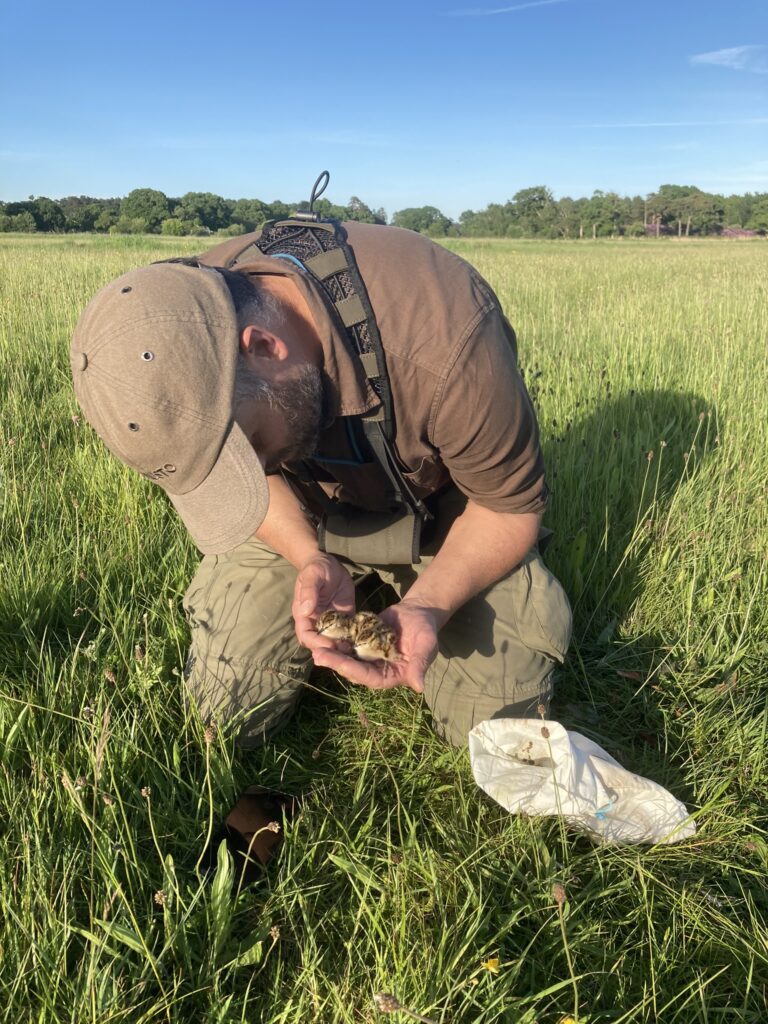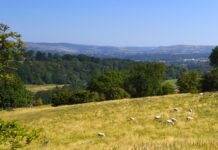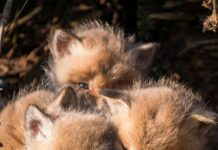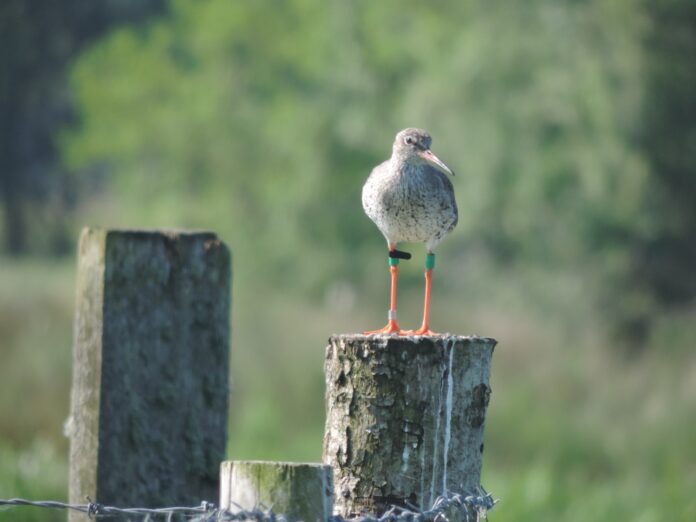A study of breeding pairs of Redshank – a threatened native wading bird species – whose population is recovering in the Avon Valley in Hampshire, has shown one intrepid individual travel more than 100km to Wales for the winter. Its epic journey is helping scientists from the Game & Wildlife Conservation Trust (GWCT) to understand more about the movement and habits of this ‘amber-listed’ bird species, to help better protect it in future.
The bird was spotted in Wales after being colour ringed in Hampshire as part of research by the GWCT’s Wetlands research team. Across the UK, redshank breeding pairs and breeding success has been steeply declining since around 2000. But this key breeding ground in Hampshire is bucking the trend with an increasing population of breeding redshank, highlighting the benefits of targeted management, and suggesting there is a chance to reduce the decline of redshank elsewhere in the UK.

“We need better knowledge of redshank habitat use and site fidelity within the breeding season and between seasons,” said Lizzie Grayshon, wetlands ecologist with the GWCT. “We also need to know about the movement of birds in the valley – where they feed and where they go to in winter. This information helps us to improve land management recommendations for redshank, by understanding the specific habitats they need for nest and chick-rearing, and the areas of habitat required by each pair.”
In the summer of 2021 Lizzie fitted 12 individual redshank with colour rings. Highly unusually, all 12 of these colour ringed individuals have since been resighted: nine of them outside of the Avon Valley and one as far away as Newport, Wales.
Of the 12 birds successfully ringed, one family in particular showed some interesting results. Lizzie colour ringed an adult female and her four chicks in late April 2021. Since then, the adult female has been resighted five times, mostly at Stanpit Marsh near the mouth of the Avon. One of her fledged chicks was also spotted there. Two of the other fledged chicks were resighted in Hampshire: at Langstone near Chichester Harbour, and Keyhaven near Lymington. The fourth, by contrast, turned up over 100 km away at the Gwent Levels Wetland Reserve in Wales.
Lizzie said: “We were not expecting any of the birds to travel this far, and it will be particularly interesting to see if this bird comes back to breed in the Avon Valley in the future.
“By colour ringing just a small number of redshank in 2021, we have learnt a huge amount about their movements post-fledging and breeding. We have now resighted 6 out of the 12 birds breeding back in the Avon Valley this spring”
The GWCT Wetlands team carries out colour ringing under licence as part of monitoring the redshank population in the Avon Valley, between Salisbury and Christchurch, following the successful LIFE Waders for Real project. Between 2015 and 2019, GWCT ecologists worked with over 40 local land managers to protect threatened bird species from predators and restore habitats in the valley, which is a key breeding ground for redshank, lapwing and other wet meadow bird species. The project succeeded in reversing the decline of lapwing and redshank, redshank pairs went from 19 pairs when the project began in 2015, to 35 pairs in 2019, and this has been maintained since the project ended.
“The success of redshank breeding in the Valley really reflects the effort of the farmers and gamekeepers who have made positive changes to create ideal habitat for breeding waders with reduced predation pressure,” commented Lizzie.
Bird ringing involves fitting a bird with a lightweight, uniquely numbered metal ring which allows the bird to be identified when recaptured by another ringer or found dead. Ringing can provide data on a species’ survival and movements. Colour ringing involves fitting a unique combination of coloured rings to a bird’s leg, enabling identification of an individual bird in the field, without the need to recapture it to read the metal ring number. Ringing of all kinds is only performed under strict licence.
“The farmers and keepers in the Avon Valley have been fully engaged with the colour ringing project and enjoy hearing the reports of where the birds are travelling, especially when they return to the valley to breed in the spring,” concluded Lizzie.
To learn more about wader monitoring and bird ringing in the Hampshire Avon Valley please visit gwct.org.uk/blogs/news/2022/march/using-colour-rings-to-understand-redshank-movements/
Help keep news FREE for our readers
Supporting your local community newspaper/online news outlet is crucial now more than ever. If you believe in independent journalism, then consider making a valuable contribution by making a one-time or monthly donation. We operate in rural areas where providing unbiased news can be challenging. Read More About Supporting The West Wales Chronicle
























